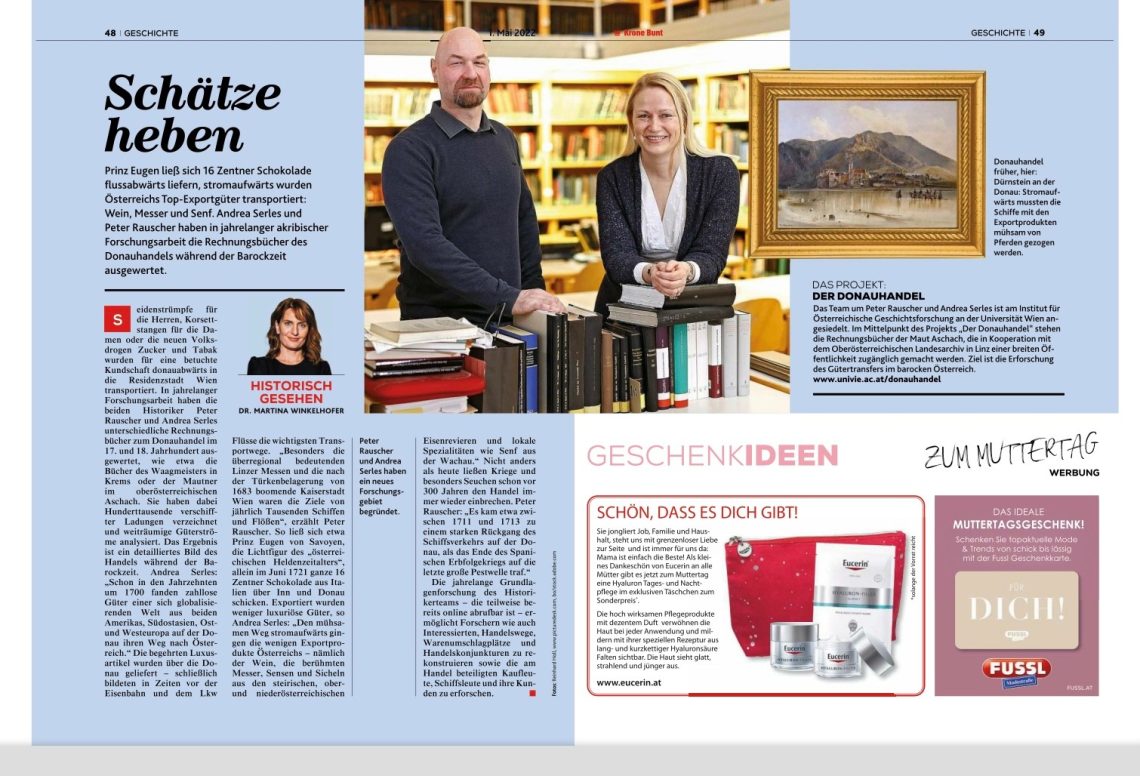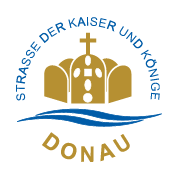Upstream - Downstream
Upstream - Downstream
In this day and age, all it takes is a touch of a button on the computer and products from all over the world are on our doorstep in a matter of days - often just hours. Shopping at the supermarket should also be done quickly. Wait, haven't I forgotten something important? I hurry back to the spice aisle, and a packet of salt lands in my shopping cart a little later.
Salt, probably the most important spice that makes soups, appetizers, meat, vegetables, bread and even desserts, and therefore actually all dishes tastier, is nowadays a matter of course.
But let's catapult ourselves back a few centuries, let's travel back in time. Back then, when there was no Internet, no supermarkets. Cars and trucks didn't exist anyway, because gasoline was unknown. How did salt get into people's cooking pots back then?
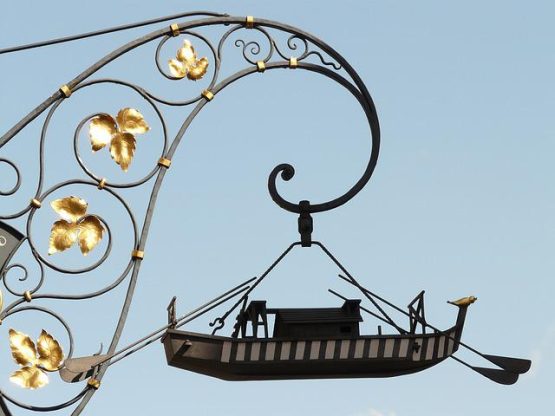
If we stand in front of the Ulm Town Hall and look up to the southern gable, we can see a wooden boat with a flat bottom and straight sides, the so-called Ulmer Schachtel. Characteristic for this type of boat is a black and white striped painting.
While in the 12th century both goods and people were transported downstream by raft, the shortage of wood in the 16th century demanded a new strategy. The first transport tills, or Ulmer Schachteln, were created. With a length of 22 meters and a width of 3 meters, they offered enough space for a wide variety of goods.
In addition to wine and cloth goods, wood, leather, cheese, dyes and flints were transported in the Ulm boxes. An early export hit was also snails ("oysters of the poor"), which were traded as a delicacy in Vienna.
The Ulm box is also known as the "Vienna Zille", because Vienna was the destination of this means of transport. From 1712 onwards, the ships were called "Ordinari ships". Ordinari means regular, so at that time there was already a fixed schedule with a regulated tariff system.
As time travelers, we take a seat in an Ulm box and travel down the Danube, getting off in Regensburg.
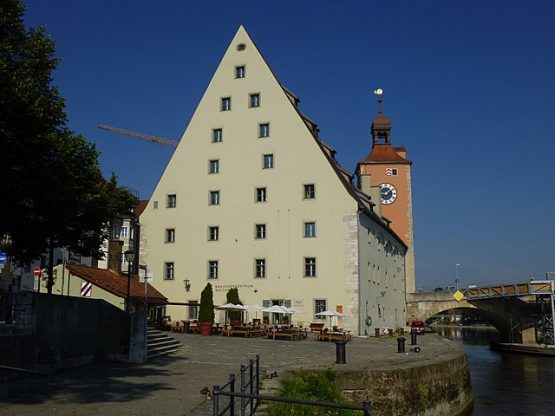
Salt has always been a coveted and precious commodity. In the Middle Ages, it was even weighed out with gold, which gave it the name "white gold. In those days, salt was considered an important, if not the most important, preservative. Only the very rich could afford to season food.
Those who traded in salt could thus count on rich profits. In the 16th century, the trade monopoly for salt lay with the so-called salt lords, before the city of Regensburg put an end to this game. For a short time, the Duchy of Bavaria got in the way, but in 1616 the time had come and the Salzstadel, which is still very much worth seeing today, was built.
At that time, the salt was mined in the Reichenhall salt works, brought to Passau and shipped up the Danube. This effort could only be accomplished with the help of horses. Up to 40 horses were harnessed to the ship trains and pulled the freight upriver. The horses moved along the towpaths, called Treppelwege in Austria.
These paths are still preserved today and partly form the ever-popular Danube Cycle Path.
However, we get back into our Viennese Zille and let ourselves drift comfortably on the Danube towards Passau.
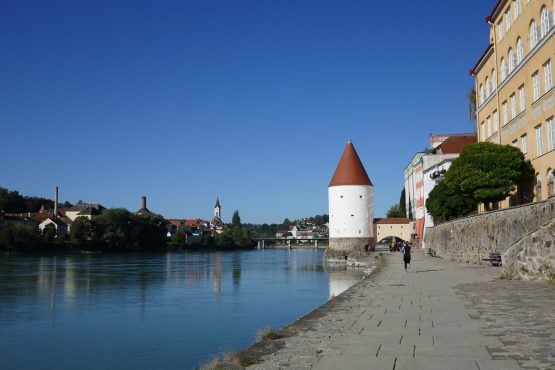
Just as in Regensburg, the saying "Unser Salz, Gott erhalt's" ("Our salt, God preserve it") also applied in Passau. Passau benefited from the right of sale, which meant that every delivery of salt had to be offered for sale for three days.
This right to lay down or stack cargo helped the town to achieve considerable wealth. The Schaibling Tower, on whose banks the precious cargoes were unloaded and reloaded, is considered a stone witness to this glorious time.
However, when Bohemia came under the rule of the Habsburgs, other sides were raised. The import of foreign salt was forbidden; after all, the Habsburgs wanted to make rich profits with the salt from the Salzkammergut.
After we have admired the sights in Passau at length, we climb back into our Zille. A scenic route lies ahead of us, but also a particularly wild one.
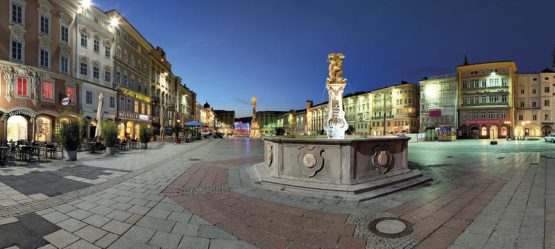
We embark again on our Ulm box and have to move close together, because goods upon goods pile up on deck. Linz is our next destination and if nothing else interferes, we will reach the city in time for the Easter market.
In Linz, the paths of the Danube cross the mule track that led from the Adriatic Sea to Bohemia and on to the Baltic Sea. For this reason, the Babenbergs had a unique marketplace built, which, with a total area of 13,200 m², will go down in history as the largest enclosed main square in Europe.
In addition to the already mentioned commodity salt, iron, animal skins, cloth, wine and grain also change hands. Even more goods end up in our barge. The next stop is planned in Stein.
The village of Stein is located directly on the Danube, but the space for trading areas at that time was scarce. Krems, on the other hand, had a castle and sufficient space for trading activities. So people made a virtue out of necessity and came to an arrangement. Ships of all sizes were reloaded and rebuilt. Like Linz, Krems became an important trading town.
And such well-known products as Krems mustard, Wachau saffron and wine end up in the horse-drawn tow trains that are transported up the Danube.
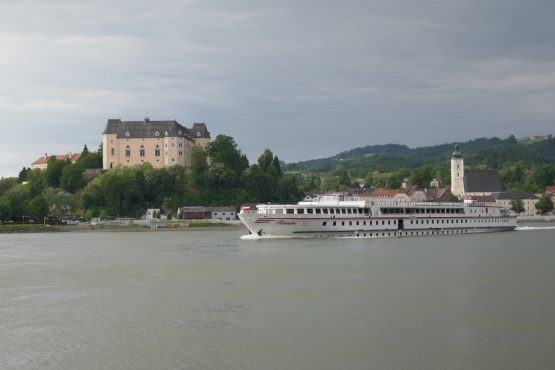
In early times, the Danube was anything but a calm, quiet river. It was a wild body of water with shallows and dreaded water eddies. Especially the area near Grein was feared. For a long time, this section was considered the most dangerous passage for ships.
The citizens of Grein were able to use this circumstance for themselves. After all, the shallow shore at a bay allowed the last possible landing of the ships before these feared whirlpools (=Struden), which even gave the region Strudengau its name. Thus pilots were taken on board, who skillfully navigated through the shallows. If the Danube had too little water, however, the entire cargo had to be unloaded. It was transported overland to the next port.
The Greiner people paid dearly for this "service". But although the journeys on the Danube were heavily regulated by tolls, stacking rights and monopolies, they were always cheaper and safer than transport by land.
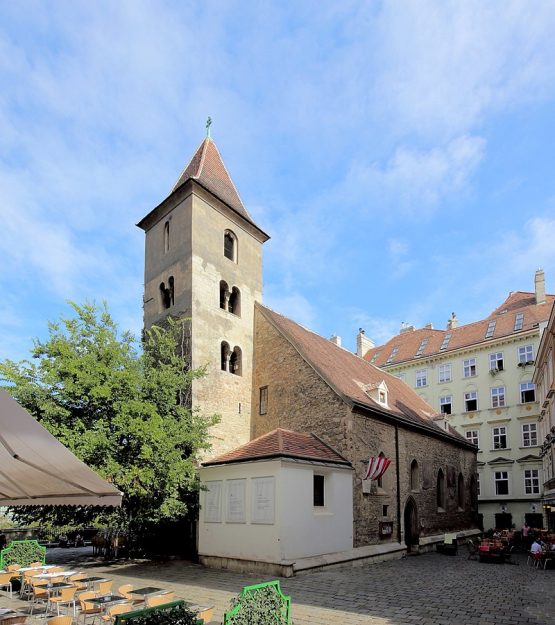
Our journey from Ulm to Vienna took 12 days, much shorter than if we had boarded a carriage. We landed directly below the Rupertikirche, today this church is called Ruprechtskirche. Saint Rupert is the patron saint of salt boatmen.
Being a curious person, I look around and discover other goods besides salt, such as marble, paving stones and roof shingles. A ship's master tells me that he once carried two lions, a tiger, pelicans and monkeys for the imperial zoo. Should I believe him? There is also talk of expensive Burgundy wines, silk, tropical fruits and olive oil destined for the Viennese nobility and clerical lords.
Boxes of books are unloaded, feathered fowl are stuffed into baskets, sometimes it smells good, sometimes it smells bad, depending on which boxes and ships we pass.
A snap of the fingers later, we find ourselves back in the year 2022. Perhaps on an excursion boat in Regensburg, Linz or Vienna, perhaps on a cruise ship somewhere in between. We sail past cities steeped in history, castles and monasteries, and enjoy the magnificent buildings that would probably never have been built without salt and without the Danube.
Gudrun Krinzinger took them on this journey through time - www.reisebloggerin.at
Transdanube Travel Story "Danube Trade": The Exchange of Stories and Goods
In the course of the INTERREG project Transdanube Travel Stories, Jörg Zenker from Ulm wrote one of the narratives on the topic of trade, which is briefly teased out here:
In addition to military, ecclesiastical and later tourist movements, it was always trade that oriented itself to the Danube and enlivened this space. Both the exchange of goods - whether due to the available raw materials found in one place and processed in others - and the development and use of markets promoted the exchange, the expansion of companies and the connection of people of different origins - whether regional or cultural. The Danube is one of the oldest trade routes in Europe and thus provides a particularly rich source for transnational stories, for encounters and experiences. Whether it's merchant families who expanded across several countries through marriage, corporate connections or other cooperation, whether it's the different currencies and payment systems, whether it's trade customs, culinary differences up to darker sides like human trafficking, organized crime in the field of drugs and prostitution. The Danube writes many stories - and they are often characterized by shrewdness, greed or smuggling, but also by honorable merchantism in the Alemannic influenced area of origin of the Danube over a philosophy of "live and let live" in the Catholic/baroque influenced Bavarian-Austrian Danube region to the bazaar mentality, which one still perceives as a phenomenon of trade in the Balkan region and finds quite fascinating as a tourist.
Merchants have brought together and shaped cultures. Families - in many cases also of Jewish origin - have created impressive houses and commercial properties over many generations, and promoted art and culture. Merchant dynasties in the style of the Buddenbroks can be traced along the Danube and often it was not only trade but love, separation, success and failure that led to fascinating and here and there also dramatic family stories. While today digital forms of business initiation are increasingly taking hold, in earlier centuries it was charm, esprit, cultural and ethnic characteristics or simply the magic of wealth that created connections.
Trade also manifested itself in traditions of gatherings - whether markets, festivals - with culinary or cultural backgrounds - to political gatherings, whether the perennial Diet of Regensburg or the Congress of Vienna. Businessmen were always present in the surrounding area to establish connections and sound out links for new markets.
You can find the full story here!
About the author: Jörg Zenker is a trained tour guide, Danube Guide and author and lives in Ulm. He manages the Zenker publishing house
